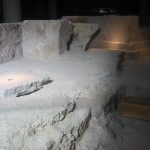The second edition of the International Conducting Competition “Llíria City of Music” celebrated its grand finale yesterday
Brian Liao is the name of the winner of the second edition of the International Conducting Competition “Llíria City of Music”, an event that establishes him as the best promise of international conducting. He does so after five days of competition in four rounds in which the winner had to prove his great talent, musicality and projection within the conducting sphere.
The competition, organized by the Llíria City Council with the collaboration of the Spanish Association of Orchestra Conductors (AESDO), awarded second place to Daniel Ros and third place to the British Daniel Joseph. In turn, Daniel Martínez won the Special Award AESDO.

With the celebration of this competition, the consistory “seeks to project the international image of our city by exporting what we know how to do best, music,” Mayor Joanma Miguel acknowledged. In this sense, the mayor wanted to highlight the variety of origins of the more than 120 submitted candidates, coming from almost 40 different countries, “which shows the wide acceptance and repercussion of the competition in only two editions.”
In turn, Councillor for Culture Mª José Llopis wished to highlight the “fine atmosphere we experienced with the members of the jury, the candidates and all the music lovers who have come to enjoy music during these days in our city,” honoured by UNESCO as a Creative City in the Music category.

The decision has been in the hands of a prestigious jury, chaired by the edetano Manuel Galduf, Chief Conductor of the Orquesta de València (1983-1997), who has been accompanied by Virginia Martínez, Chief Conductor and Artistic Director of the Symphony Orchestra of the Region of Murcia; Filipe Cunha, Chief Conductor of the Braga Philharmonic Orchestra; Andrés Ascanio, Musical Academic Director of El Sistema de Venezuela; and the Artistic Director of the competition, Cristóbal Soler. The final round also had José María Moreno, Chief Conductor of the Malaga Philharmonic Orchestra; Carlos Riazuelo, conductor from Venezuela; Víctor Eloy López, Chief Conductor and Artistic Director of the Andalusia Symphony Orchestra; Manuel Herrero, Deputy Artistic Director of the RTVE Orchestra; and Jaume Gavilán, Artistic Agent of the ADDA-Symphony Orchestra of Alicante.
Four rounds and a great final concert
The candidates had to face four rounds with a demanding repertoire consisting of pieces by Schoenberg, Holst or Haydn; and a final concert, conducting an ensemble of more than 60 musicians, mainly from Llíria. In this performance, the programme was the same for the three conductors, made up of Monologue (chamber 23) for chamber orchestra by Amparo Edo, with a special adaptation for the competition; Variations on a Rococo Theme for cello and orchestra by Tchaikovsky, with the soloist Mar Bonet; and Egmont (Overture) Op. 84 by Beethoven.
The competition has distributed more than 8,500 Euros in economic prizes and, in addition, the winner may be invited to conduct a concert with the ten collaborating orchestras. These are RTVE Symphony Orchestra, Valencia Orchestra, Venezuela’s Symphony Orchestra El Sistema, Alicante’s ADDA-SIMFÒNICA Symphony Orchestra, Extremadura Symphony Orchestra, Málaga Philharmonic, Region of Murcia Symphony Orchestra, Oviedo Filarmonía, Granada City Orchestra, and Andalucía Symphony Orchestra.








